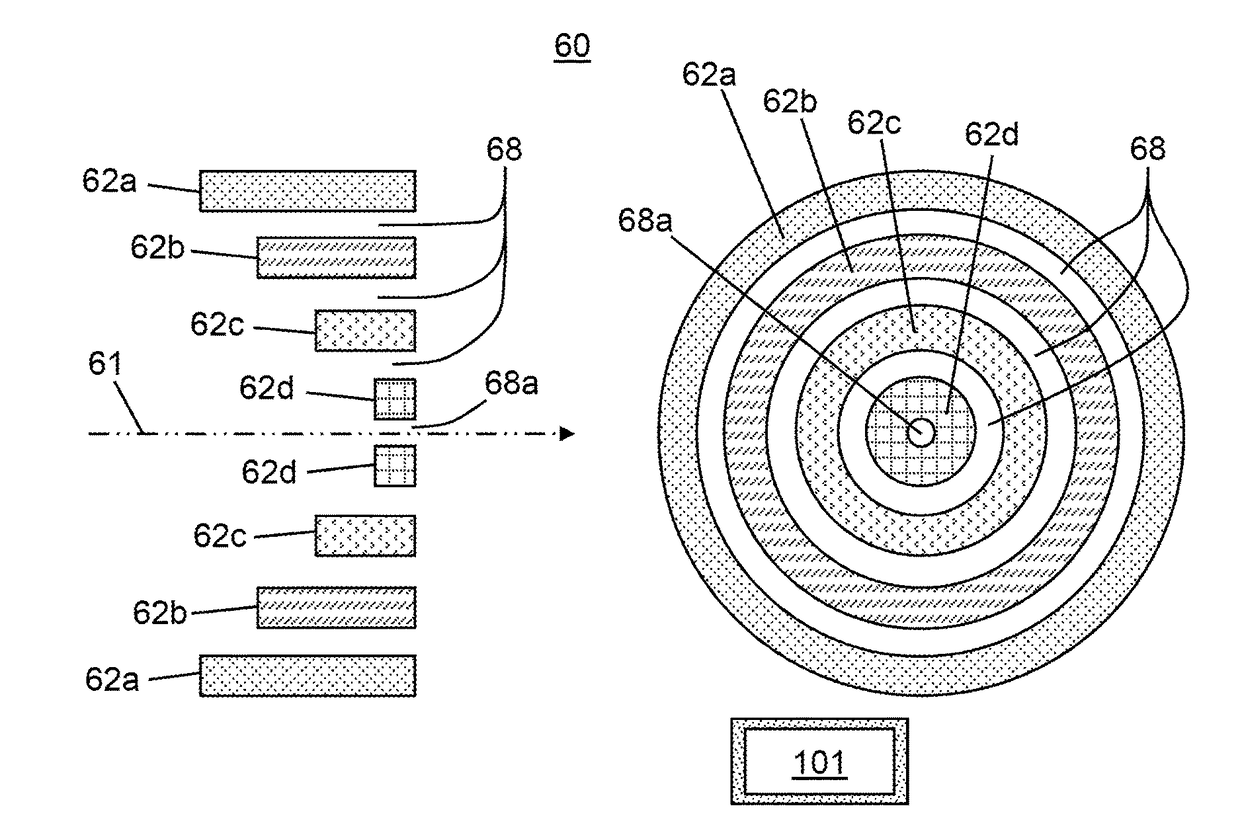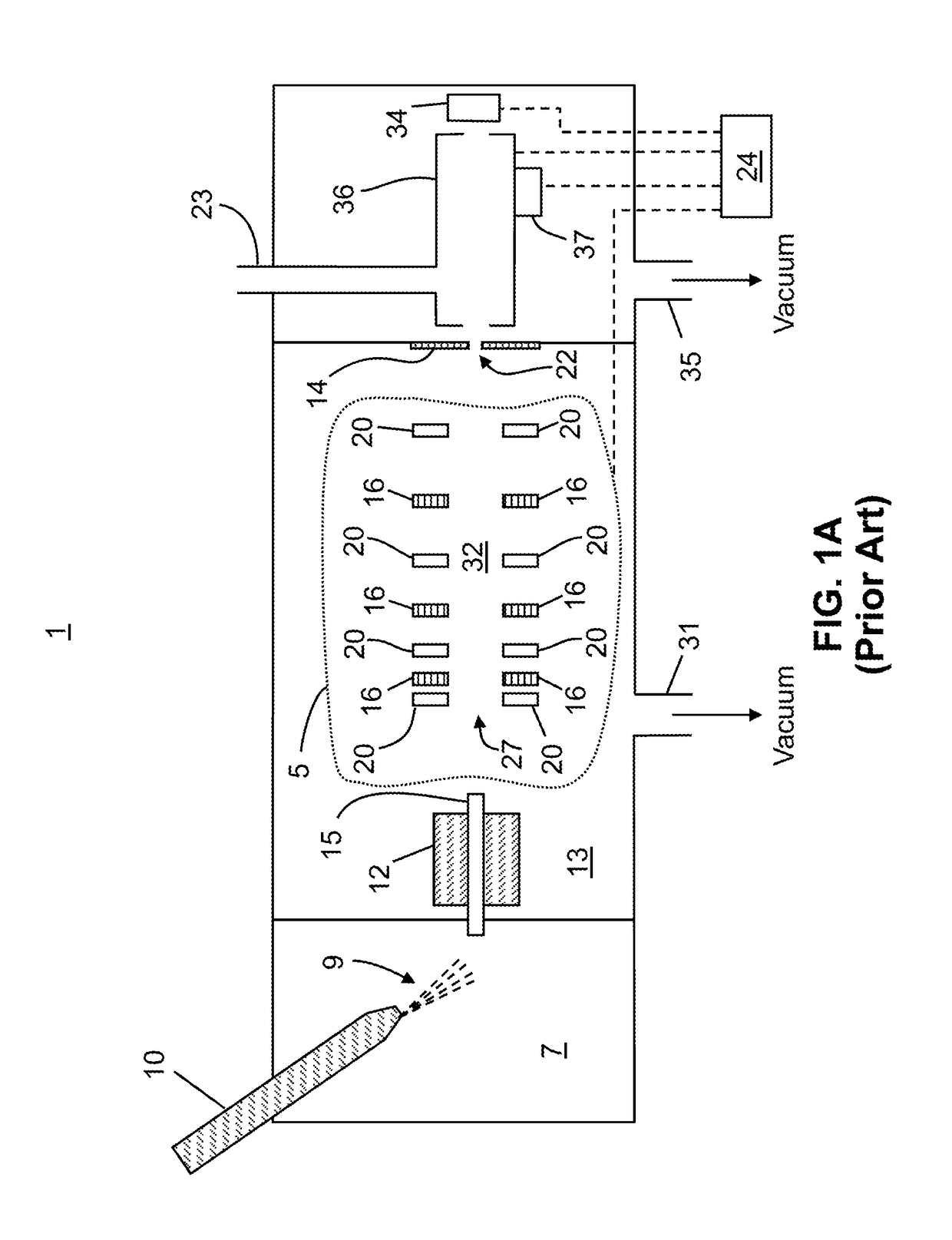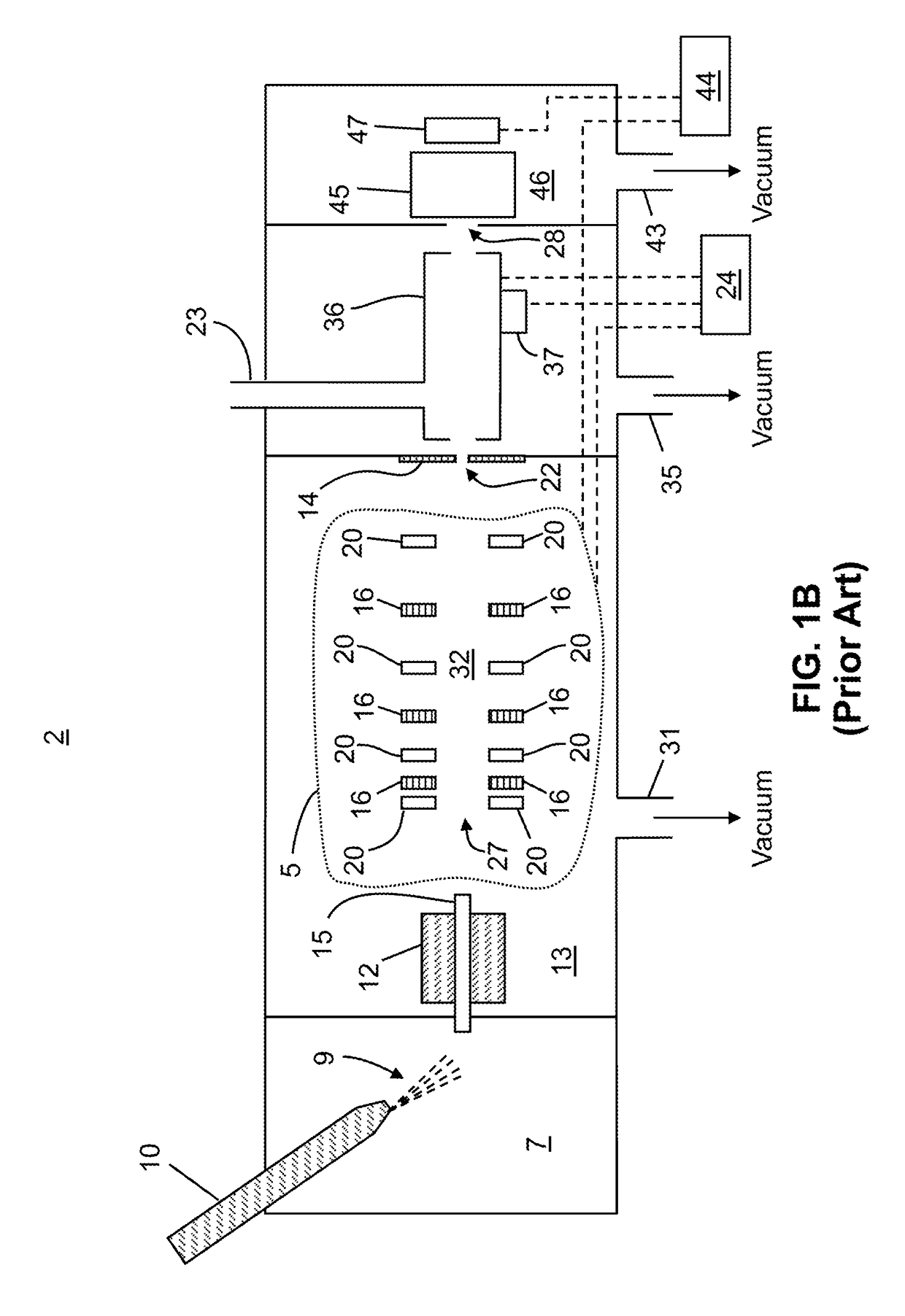System for transferring ions in a mass spectrometer
a mass spectrometer and ion transmission technology, applied in the field of ion optics for mass spectrometers, can solve the problems of limiting the overall sensitivity of the mass spectrometer, unsuitable vacuum inside the mass spectrometer for mass analysis, and limiting the pumping requirements of skilled in the art, so as to improve the overall ion transmission efficiency, and reduce the pumping requirements
- Summary
- Abstract
- Description
- Claims
- Application Information
AI Technical Summary
Benefits of technology
Problems solved by technology
Method used
Image
Examples
Embodiment Construction
[0066]The following description is presented to enable any person skilled in the art to make and use the invention, and is provided in the context of a particular application and its requirements. Various modifications to the described embodiments will be readily apparent to those skilled in the art and the generic principles herein may be applied to other embodiments. Thus, the present invention is not intended to be limited to the embodiments and examples shown but is to be accorded the widest possible scope in accordance with the features and principles shown and described. The particular features and advantages of the invention will become more apparent with reference to the appended figures taken in conjunction with the following description.
[0067]FIGS. 5A-5B provide schematic illustrations of a first ion transport apparatus that may be employed in systems in accordance with the present teachings. The ion transport apparatus illustrated in FIGS. 5A-5B in the Applicant's U.S. Pa...
PUM
 Login to View More
Login to View More Abstract
Description
Claims
Application Information
 Login to View More
Login to View More - R&D
- Intellectual Property
- Life Sciences
- Materials
- Tech Scout
- Unparalleled Data Quality
- Higher Quality Content
- 60% Fewer Hallucinations
Browse by: Latest US Patents, China's latest patents, Technical Efficacy Thesaurus, Application Domain, Technology Topic, Popular Technical Reports.
© 2025 PatSnap. All rights reserved.Legal|Privacy policy|Modern Slavery Act Transparency Statement|Sitemap|About US| Contact US: help@patsnap.com



